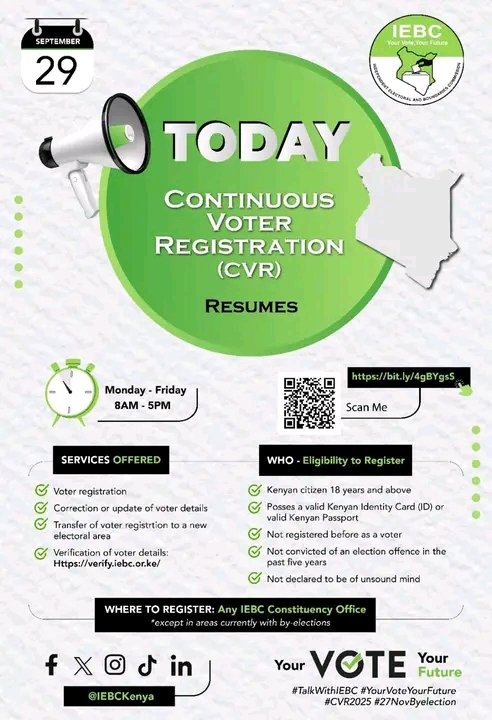
Absorption of Technology by IEBC in the National Voter Registration Rollout.
Since the resumption or kick-off of the Continuous Voter Registration (CVR), the Independent Electoral and Boundaries Commission (IEBC) has been leaning heavily on electoral technologies that it has developed over past election cycles. Key among these is the Kenya Integrated Election Management System (KIEMS) kit infrastructure, which supports biometric voter registration (BVR), electronic voter identification (EVI) / verification (EVV), result transmission / tallying, and maintaining the integrity of the voter register.
In preparation for this rollout, IEBC has conducted mapping of registration centres, trained personnel, tested and configured KIEMS kits, and put in place logistical and hardware arrangements. These preparations also include cy-bersecurity and data protection compliance, since the systems collect and process personal data (fingerprints, facial images, identity document numbers etc.).
One of the strengths of the technological absorption is that IEBC is using technology to make the registration process more secure, more verifiable, and (relatively) faster compared to wholly manual systems. The biometric registration ensures fewer ghost voters and duplicate registrations. The electronic identification / verification reduces the risk of impersonation at registration sites.
However, there are also constraints. Budget cuts have been flagged as a risk to maintaining licenses, software, hardware upkeep, and in particular the routine maintenance of ICT equipment required for the KIEMS ecosystem. Another challenge is that many of the existing KIEMS kits are aging, and IEBC has expressed concern that by 2027 some of the current technology will be obsolete. Finally, there is a public trust / awareness gap: the Carter Center, for example, has noted that although deployment of technology has improved transparency, voter education around what technologies are doing (how biometric capture works, how identifiers are verified, what happens if tech fails) has not always been robust enough.
In sum, IEBC’s absorption of technology in the CVR rollout shows commitment to using modern election-management tools to enhance accuracy, integrity, and accessibility in voter registration; yet for full success the technology must be well maintained, properly funded, legally grounded, and accompanied by strong public communication and safeguards.


